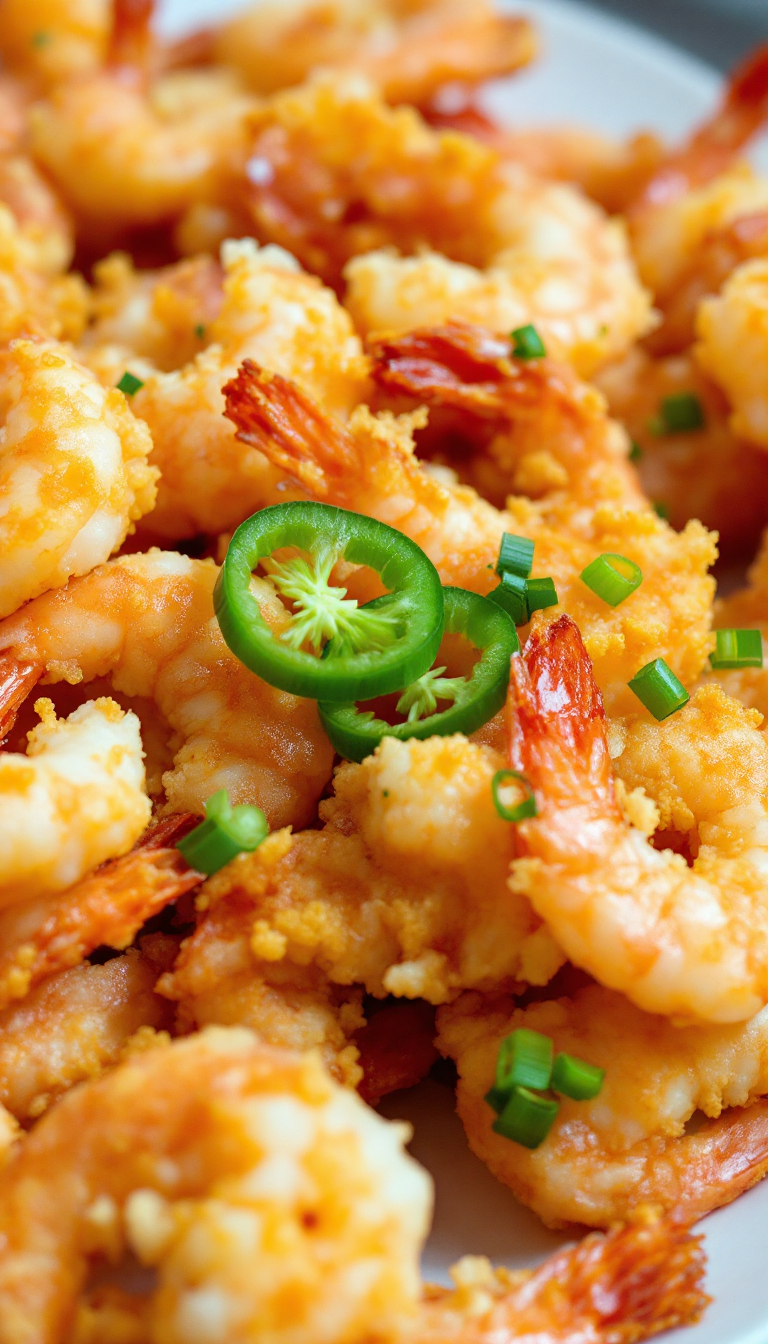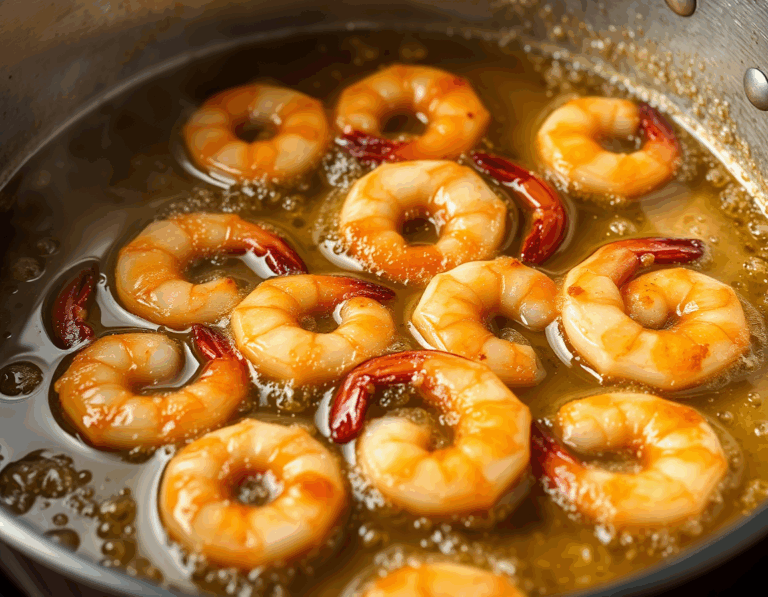
Ah, Southern fried shrimp—just saying it makes my mouth water. It’s like a golden, crispy hug from the South, with each bite taking you closer to a sunny porch. Honestly, I’ve been craving that crunch since my last trip to Charleston, where the air was salty and the shrimp were unforgettable.
Steps
- Mix the self-rising flour, corn flour, cornmeal, and Creole seasoning in a large shallow bowl. In a separate bowl, whisk together buttermilk, eggs, and 1/2 cup of the flour mixture.
- Prepare a baking sheet with a wire rack. Pat the shrimp dry with paper towels and add them to the buttermilk mixture, ensuring they are evenly coated. Let excess buttermilk drip off the shrimp.
- Dredge the shrimp in the flour mixture, pressing gently to make sure the coating sticks. Shake off any extra flour and place the shrimp on the prepared baking sheet. Refrigerate for 30 minutes to allow the coating to adhere.
- Line another baking sheet with paper towels. Heat peanut oil in a large Dutch oven over medium-high heat until it reaches 365ºF (185ºC). Fry about a third of the shrimp at a time for approximately 2 minutes until they are golden brown and cooked through.
- Use a slotted spoon to transfer the cooked shrimp to the paper towel-lined baking sheet. Let the oil return to 365°F (185ºC) between batches, and repeat the frying process with the remaining shrimp. Serve with remoulade sauce if desired.

Ingredients
- 1 cup self-rising flour (4 1/2 ounces; 128g)
- 1 cup corn flour (4 ounces; 113g)
- 3/4 cup yellow cornmeal (4 ounces; 113g)
- 2 tablespoons Creole seasoning (1 ounce; 30g)
- 1/2 cup (120ml) whole buttermilk
- 2 large eggs
- 1 1/2 pounds (680g) large shrimp (26 to 36 per pound), peeled, deveined, with tails on
- Peanut oil, for frying
- New Orleans Rémoulade Sauce or store-bought rémoulade sauce (optional)
FAQ
- What type of shrimp should I use for Southern fried shrimp?
- Ideally, Gulf shrimp are the best choice for Southern fried shrimp due to their sweet and nutty taste. However, if they are not available, you can use local and fresh shrimp if you live near the coast, or opt for frozen shrimp from the grocery store. Make sure to select shrimp that are free of sodium tripolyphosphate (STPP) to ensure better flavor and texture.
- What is the best way to prepare the batter for fried shrimp?
- To prepare the batter, mix self-rising flour, corn flour, cornmeal, and Creole seasoning for the dry mixture. For the wet mixture, combine buttermilk and eggs, then add some of the flour mixture to create a loose batter. This combination ensures that the breading adheres well to the shrimp and has a light, crispy texture with a flavorful kick.
- Why should the battered shrimp rest in the refrigerator before frying?
- Allowing the battered shrimp to rest in the refrigerator for about 30 minutes helps the dry mixture to slightly hydrate and adhere better to the shrimp. This step is crucial to prevent the coating from flaking off during frying, ensuring a crispy and well-adhered breading.
- How can I achieve the perfect crispy texture when frying shrimp?
- To achieve a crispy texture, maintain the oil temperature at 365ºF and fry the shrimp in small batches to avoid overcrowding. This ensures the oil stays at the right temperature. Additionally, do not overcook—fry the shrimp only until the breading turns golden brown to keep them juicy and tender.
- What are some recommended accompaniments for serving fried shrimp?
- Fried shrimp can be served with a variety of dipping sauces, such as rémoulade or cocktail sauce. They pair well with classic sides like French fries or a salad with crisp greens and creamy dressing. Serve the shrimp immediately after frying to enjoy their optimal flavor and texture.
Tips
- Ensure you let the battered shrimp rest in the refrigerator for about 30 minutes before frying. This helps the coating adhere better, resulting in a more cohesive and crispy final product.
- Maintain the oil temperature at 365ºF (185ºC) while frying. Fry in batches to avoid overcrowding, which can lower the oil temperature and lead to soggy shrimp.
- Choose shrimp that are free of sodium tripolyphosphate (STPP) to ensure they remain flavorful and tender when cooked. Look for unpeeled, individually quick frozen (IQF) shrimp with “shrimp” as the only listed ingredient.
- Avoid overcooking the shrimp. Fry them only until the breading turns golden brown, typically no more than a few minutes, to keep them juicy and prevent a rubbery texture.
Equipment
- Large Dutch Oven – Essential for deep frying the shrimp.
- Spider Skimmer or Slotted Spoon – Useful for safely stirring and removing the shrimp from the hot oil.
- Wire Rack – Used for letting the shrimp rest and for draining excess oil after frying.
- Rimmed Baking Sheets – Needed for organizing and preparing the shrimp before and after frying.